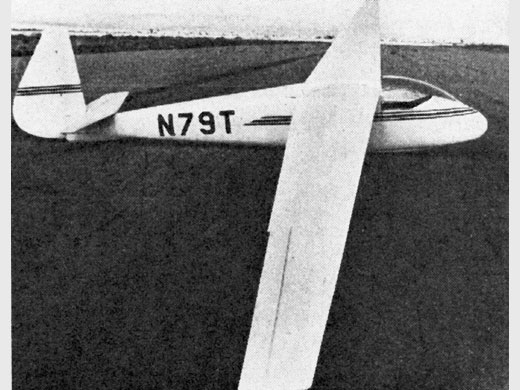
Ross-Johnson RJ-5
| DONNÉES GÉNÉRALES |
| Année du premier vol (ou de design, si seul projet) |
1950 |
| Pays | USA |
| Designer(s) | ROSS, Harland |
| Premier constructeur | |
| Type d'appareil | Planeur |
| Fonction | Entraînement |
| SPÉCIFICATIONS TECHNIQUES |
| Envergure | 16.75 m |
| Longueur | 6.34 m |
| Hauteur | -- |
| Allongement | 24 |
| Surface alaire | 11.6 m2 |
| Profil aile | NACA 63 (2)-615 |
| Masse à vide | 224 kg |
| Masse maxi | 340 kg |
| Charge alaire | 27.1 kg/m2 |
| Vitesse mini | 61 km/h |
| Vitesse maxi | 193 km/h |
| Finesse maxi | 40 à 85 km/h |
| Taux de chute mini | 0.52 m/s à 72.5 km/h |
| Nb sièges | 1 |
| Structure | Structure entièrement métallique. |
AUTRES INFORMATIONS
SOURCES DOCUMENTAIRES
| Liens WEB | Site : Site de William Maloney - National Soaring Museum . 8 photos + specs de l'exemplaire du NSM. (2010-05-27 CL) Site : Alex Sailplane Directory . Note + 1 photo + specs. (2010-05-29) Site : Site Aerosente . Histoire + 2 photos. (2010-05-29 CL) Site : UIUC Applied Aerodynamics Group . NACA 63(2)-615 airfoil. (2010-06-26 JM) Site : UIUC Applied Aerodynamics Group . NACA 63(2)-615 fichier DAT. (2010-06-26 JM) |
| Livres | Sailplanes 1945-1965 par SIMONS, Martin (2001) [p. 144. Photo + 3-vues + specs + description]. The world's sailplanes par OSTIV (1958) [p. 189 - 193. Photo + 3-vues + specs + description]. |
| Autres sources | Soaring septembre-octobre 1958 p 10. Photo. Soaring août 1963 p 3. Note et photo de couverture. L’évolution du planeur R.J.-5, par Richard H. JOHNSON (Traduction par Henri Lambert), Les Ailes n° 1348, 01 décembre 1951 Mon vol record, de 880 km, en planeur, par Richard H. JOHNSON (Traduction par Jean Romeyer), Les Ailes n° 1342, 20 octobre 1951 |

Team J2mcL © 2003 -
- Pages optimisées pour Mozilla Firefox


